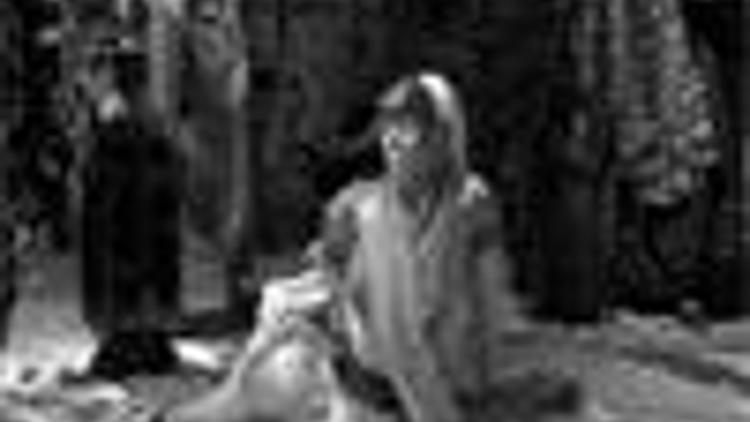Tricks of the trade: Illusion of costume
Güncelleme Tarihi:

MOULINS - The latest exhibition at the National Centre for Stage Costume in Moulins, a town in central France, lifts the lid on the tricks of the trade, illustrated by around 100 costumes from its archives on the theme of flowers and gardens.
Lavish costumes are an intrinsic part of the magic of ballet, opera and theater, but they are every bit as much of an illusion as the performance.
What looks like intricate lace may have been sprayed on with a paint gun, rich tapestries are not woven but faked with digital photo printing and appliquéd flowers are more likely to be plastic than silk. Because they are seen at a distance, the audience is fooled.
The latest exhibition at the
It is set out in tableaux - many of them staples in the stage repertoire, like the enchanted forest, the woodland glade, the walled medieval garden, the hot house and the winter landscape - each showcasing and explaining techniques.
"You can see the details that spectators can't see from their seats," says Delphine Pinasa, the center's deputy director, pointing out the trompe l'oeil effect of embroidery achieved by layering paint onto the sleeve of a jacket. "It gives the perfect illusion of work by hand."
Traditionally costumes were hand-embroidered but now it is hardly used at all because it would be too expensive, and too time consuming.
"Costumes have to be made very quickly and to tight budgets as productions also have shorter runs than in the past. Designers today also like to leave their own stamp, they don't want to recycle," Pinasa says.
The last time real embroidery was used in any quantity was in Rudolf Nureyev's "
New sophisticated materials and technology are increasingly replacing older methods of ornamentation - from ink jet printing and digital photography to the devore technique of applying acid to eat away fabric for so-called "chemical lace," and paint spray guns to achieve effects of light and shadow. Stencil and silk-screen printing are essential parts of the armory.
But the exhibition spans decades, so one can compare costumes from the 1950s and earlier with ones from recent productions, like the black velvet crinoline worn in a 1951 "La Traviata" and a sprigged white muslin from a 1998 production of the Verdi opera at the new Bastille opera house in
Costumes have to be 'rested' for a few years
Many pieces on display are spectacular: like the fruit and vegetable seller from Poulenc's comic opera "The Breasts of Tiresias," with a giant pumpkin pouf behind, cherries dangling from each breast and skirts festooned with vegetables, and the strawberry and mandarin tutus from Tchaikovsky's "Nutcracker."
From the art deco embroidery on a coat worn in Strauss' "Der Rosenkavalier," to the hand-painted sequins sprinkled over a black velvet dress from
In common with couture, all the soloists' costumes are made to measure.
Such considerations were among the criteria used to select what to preserve when the center was inaugurated in July 2006 and received over 80,000 costumes from the
The center itself is an historic monument, which housed three cavalry regiments from World War I, with huge vaulted rooms converted from stables.
The costumes are stored in a purpose-built concrete block on the site of one of the building's two wings, demolished when it fell into disuse.
They are protected from harmful daylight and in a dust-free environment, kept at a constant temperature of 12 Celsius by water pumped up from the water table. Everything is on specially designed padded hangers - made to specification by inmates at the local prison - with the more delicate items laid out on tissue paper in drawers. Open one at random and you may find a velvet cape worn by the diva Maria Callas in a production of "Norma."
The stores are not open to the public, but their contents are the source of the center's permanent rotating exhibitions. Because of their fragility, textiles have to be "rested" for a few years after they have been on show. The current exhibition is open until April when the center will close for three weeks to dismantle it and mount a new show in May on the legendary dancer and choreographer Rudolf Nureyev.

